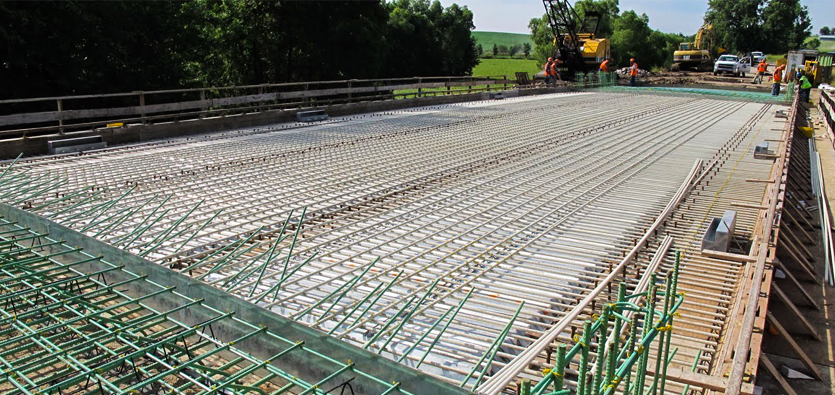Composites: The Future of Lasting Building Materials
Composites: The Future of Lasting Building Materials
Blog Article
Unlocking the Ecological Benefits of Recycled Composites in Building And Construction and Style
In the world of construction and design, the application of recycled composites holds significant pledge for improving sustainability methods and decreasing ecological impact. The change towards an extra lasting future in these sectors pivots on opening the full potential of recycled compounds.

Environmental Impact Reduction
The reduction of environmental impact via the usage of recycled compounds in building and layout plays an important role in sustainable techniques. By including recycled composites right into building products, the building sector can substantially reduce its carbon impact and contribute to a much more green future. These lasting products, made from repurposed plastics, timber fibers, or various other recycled components, use a feasible option to typical building products without endangering on quality or toughness.
Recycled composites assist divert waste from land fills and minimize the requirement for removing basic materials, thus preserving natural deposits. Additionally, the manufacturing procedure of these composites commonly eats much less energy and gives off fewer greenhouse gases compared to creating virgin materials (composites). This change in the direction of making use of recycled compounds not just minimizes environmental damage but likewise promotes a round economy by motivating the reuse of products that would otherwise be thrown out
Waste Reduction
With a focus on decreasing waste in building and design, the combination of recycled compounds provides a sustainable service to minimize environmental impact. Waste minimization is a critical facet of lasting methods, and using recycled compounds offers a possibility to accomplish this goal successfully. By using products that have actually already served their first function, such as recycled plastics or reclaimed wood fibers, the building and construction and style sectors can significantly decrease the quantity of waste created and sent to garbage dumps.
Recycled composites have the possible to divert substantial amounts of waste from traditional disposal techniques, adding to a much more circular economic climate where sources are used successfully. Additionally, the production procedure of recycled compounds usually consumes much less energy and generates less emissions contrasted to virgin products, additionally reducing the ecological footprint of construction and design tasks.
Executing waste reduction strategies through the consolidation of recycled compounds not only assists in saving natural deposits however likewise promotes a much more lasting strategy to structure and making for a greener future.
Energy Preservation
Incorporating recycled compounds not only reduces waste in building and construction and design yet also plays an important duty in improving energy conservation practices within the industry. The usage of recycled composites in construction can substantially add to power preservation through various ways. First of all, the production of virgin materials commonly requires significant energy inputs, whereas utilizing recycled composites eats less power, consequently reducing general energy intake. Furthermore, integrating recycled composites can add to much better insulation residential or commercial properties in buildings, minimizing the need for excessive heating or cooling, and as a result lowering power usage for climate control. The light-weight nature of lots of recycled compounds can lead to lighter frameworks, needing less power for transportation and installment. By promoting using recycled compounds in building and construction and layout, the market can make significant strides towards attaining power efficiency and reducing its carbon footprint, inevitably contributing to a much more sustainable built atmosphere.
Carbon Footprint Decrease
Enhancing sustainability methods through the utilization of recycled composites in construction and style significantly minimizes the carbon footprint of the sector. By incorporating recycled products right into the manufacturing of compounds, the demand for virgin resources lowers, causing reduced energy consumption and greenhouse gas exhausts connected with typical manufacturing processes. This decrease in carbon impact is crucial in combating environment adjustment and promoting a more eco-friendly approach to building and construction and style.
Furthermore, using recycled compounds also aids in diverting waste from garbage dumps, consequently mitigating blog here the ecological effect of disposal and promoting a circular economy. The carbon footprint reduction achieved through the fostering of recycled compounds aligns with the international press towards sustainable techniques and the decrease of industrial exhausts. It showcases a dedication to accountable source monitoring and a shift towards greener alternatives in the building and style sectors. Ultimately, by prioritizing the assimilation of recycled compounds, the market can make substantial strides in lowering its carbon impact and adding to a much more lasting future.
Lasting Future
The combination of recycled compounds in construction and layout not just addresses prompt environmental issues yet additionally lays a solid structure for a sustainable future in the sector. By incorporating recycled composites into building materials and items, the construction and layout sectors can substantially decrease their dependence on virgin sources, leading to a much more round economic climate. This change in the direction of sustainability is crucial for reducing the ecological impact of traditional construction techniques, which frequently lead to high levels of waste generation and resource deficiency.

Final Thought
Finally, recycled compounds supply significant environmental benefits in building and construction and design by lowering ecological impact, decreasing waste, preserving energy, decreasing carbon footprint, and advertising a lasting future. Welcoming using recycled compounds can add to a much more environmentally-friendly approach to building and design, inevitably leading to an extra lasting and greener future for all.
The decrease of environmental effect with the use of recycled composites in building and construction and design plays a vital role in sustainable techniques.With an emphasis on minimizing waste in try this site construction and style, the combination of recycled compounds uses a lasting solution to lower ecological influence. By promoting the use of recycled compounds in building and style, the market can make considerable strides towards accomplishing energy performance and minimizing its carbon footprint, eventually adding to an extra sustainable built environment.

Report this page